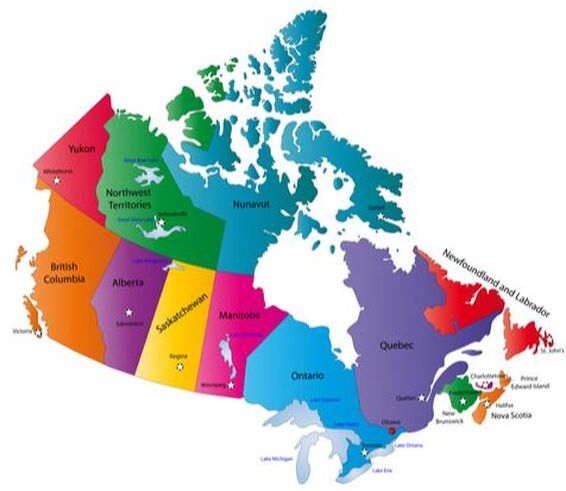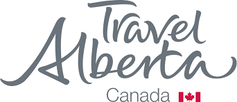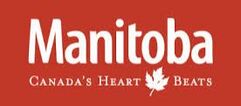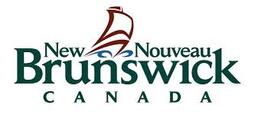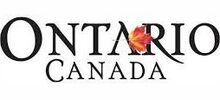The second largest country in the world, Canada offers visitors a range of experiences as varied as the land itself. It provides something to suit the taste of every traveller: large cosmopolitan cities; frozen northern tundra and snowy mountain peaks; rugged coastlines; rich farmlands; and pioneer outposts.
Canada is bound to the west by the Pacific Ocean and Alaska, to the east by the Atlantic Ocean, to the north by the polar ice cap, and to the south by the United States of America. It's a country renowned for its natural beauty, making it a favourite destinations for lovers of the outdoors.
The cities have been carefully designed to preserve metropolitan green belts and parklands, ensuring that Canadians are never far from their natural heritage. The country has a French and British colonial history, reflected in its cuisine, culture, and customs. Canadian identity is mixed in with the legacy of the country's own aboriginal First Nations history.
In the south, the Rocky Mountains separate Canada's two main tourist provinces of British Columbia and Alberta. The mountains abound with winter sports resorts, with the most popular venues for outdoor pursuits being the country's huge national parks. There are more than 41 national parks in Canada, with the Wood Buffalo National Park in Alberta being larger than Switzerland. Canadian national parks are unique in that they have cities and towns within the protected areas, providing comfortable bases for exploring the natural and manmade attractions.
Canada is bound to the west by the Pacific Ocean and Alaska, to the east by the Atlantic Ocean, to the north by the polar ice cap, and to the south by the United States of America. It's a country renowned for its natural beauty, making it a favourite destinations for lovers of the outdoors.
The cities have been carefully designed to preserve metropolitan green belts and parklands, ensuring that Canadians are never far from their natural heritage. The country has a French and British colonial history, reflected in its cuisine, culture, and customs. Canadian identity is mixed in with the legacy of the country's own aboriginal First Nations history.
In the south, the Rocky Mountains separate Canada's two main tourist provinces of British Columbia and Alberta. The mountains abound with winter sports resorts, with the most popular venues for outdoor pursuits being the country's huge national parks. There are more than 41 national parks in Canada, with the Wood Buffalo National Park in Alberta being larger than Switzerland. Canadian national parks are unique in that they have cities and towns within the protected areas, providing comfortable bases for exploring the natural and manmade attractions.
Helpful Travel Information:
Language: The official languages are English and French (spoken predominantly in Quebec).
Passport/Visa: All visitors must hold a valid passport. We recommend that passports always be valid for six months after intended period of
travel. Visitors are required to hold onward or return tickets, all documents needed for the next destination and sufficient funds to cover the period of intended stay.
Currency: The currency used is the Canadian Dollar (CAD). Banks and bureaux de change will change cash, as will some hotels.
Major credit cards are widely accepted and ATMs are widespread. US Dollars are widely accepted.
Electricity: Electrical current is 120 volts, 60Hz. American-style flat two-pin plugs and a plug with a third round grounding pin are standard.
Tipping: There is no service charge added to restaurant bills in Canada and staff expect a tip of around 15 percent.
Destination Canada
Centers for Disease Control (CDC)
Medical Practitioners
US Embassy
US State Department
Language: The official languages are English and French (spoken predominantly in Quebec).
Passport/Visa: All visitors must hold a valid passport. We recommend that passports always be valid for six months after intended period of
travel. Visitors are required to hold onward or return tickets, all documents needed for the next destination and sufficient funds to cover the period of intended stay.
Currency: The currency used is the Canadian Dollar (CAD). Banks and bureaux de change will change cash, as will some hotels.
Major credit cards are widely accepted and ATMs are widespread. US Dollars are widely accepted.
Electricity: Electrical current is 120 volts, 60Hz. American-style flat two-pin plugs and a plug with a third round grounding pin are standard.
Tipping: There is no service charge added to restaurant bills in Canada and staff expect a tip of around 15 percent.
Destination Canada
Centers for Disease Control (CDC)
Medical Practitioners
US Embassy
US State Department
|
|
|
|
If you like any of the resorts below, click on button below to check price and availability.
You can contact us at 757-425-3737 or book direct through our site
You can contact us at 757-425-3737 or book direct through our site
|
Alberta
Tourism in Alberta is centred on the famous Rocky Mountains which flank its western border with British Columbia, offering a host of alpine attractions. The north is a sparsely inhabited wilderness of forests, lakes, and rivers; the provincial capital of Edmonton is central; while on the border with Saskatchewan in the east, the atmosphere takes on a Wild West feel in the prairies and Badlands.Even in the cities and towns, visitors to Alberta can be sure that nature is never far away. Albertans love the outdoors, and urban environments are interspersed with plenty of lush river parks and greenbelts. In fact, Edmonton has more parkland per capita than any other North American city.
An important aspect of Alberta's heritage is its aboriginal culture. Home to 43 First Nations, this heritage has been preserved in 14 reserves and educational attractions, ranging from the world's largest tepee to native interpretive trails and exquisite handmade crafts. The natural beauty of this Canadian province is world-renowned, so it's no surprise to discover that it is home to five of Canada's 14 World Heritage Sites: Head-Smashed-In Buffalo Jump, Waterton-Glacier International Peace Park, Banff-Jasper National Parks, the enormous Wood Buffalo National Park, and Dinosaur Provincial Park. Climate: Alberta has a dry continental climate, with four distinct seasons including hot summers and very cold, snowy winters. Summer runs between June and August, when days are warm and evenings are cool. Winters, between December and February, are cold with heavy snowfalls, particularly in the Rockies. The province is large and extends over multiple terrains, making the climate highly variable from area to area. Airport: Calgary International Airport (YYC) Location: The airport is located 12 miles (19km) from Calgary city center. Airport: Edmonton International (YEG) Location: The airport is located 19 miles (30km) from Edmonton city centre. Time: GMT -7 (GMT-6 from the first Sunday in March to the first Sunday in November). Resorts & Map
Activites
|
|
British Columbia
Canada's most westerly province, British Columbia is sandwiched between the Rocky Mountains on the east and the mighty Pacific Ocean on the west. It's also bordered to the south by the USA and to the north by the Northwest and Yukon territories.Its location on the Pacific Rim ensures that British Columbia has a rich blend of cultures. Together with the area's own rich indigenous heritage, this diverse makeup makes for interesting towns and cities with a cosmopolitan ambience. The combination of sea and mountains, together with the broken coastline sporting hundreds of islands and inlets, gives the province a varied set of natural attractions and recreational opportunities, from world-class winter sports to sailing or hiking in tall forests. It is especially attractive to travellers who enjoy the great outdoors, particularly because a good transport infrastructure of ferries, charter boats, trains, and well-maintained roads makes it possible to access all the best wilderness spots in British Columbia with ease and comfort. British Columbia is home to four national parks, seven provincial heritage sites, many nature reserves, and the scenic Cariboo Chilcotin Coast. The coast has a number of beautiful fjords and is a popular destination for canoeing. The volcanic mountains of Tweedsmuir Provincial Park provide trekking opportunities while the Kootenay Rockies boast some of the best skiing and snowboarding in Canada. The provincial capital of British Columbia is the city of Victoria, situated on the southern tip of Vancouver Island. But its largest and most populated city is Vancouver, known as Canada's 'emerald jewel' because of its green-blue vistas of mountains and sea. Climate: British Columbia's climate is extremely varied due to its diverse topography. The coastal region has a comparatively mild winter climate, with lots of rainfall. November and February tend to be the wettest months, while May and September are probably the best times to visit the coast. Vancouver enjoys a maritime climate, with relatively mild winters and warm summers. Although winters can be notoriously rainy, there are often long periods of continuous sunshine in the summertime when visitors come to explore the region's natural beauty. Snowfall is rare in the city, but is more than adequate for the ski slopes on the Coast Mountains to the north. The interior to the east of the Coast Mountains has a much drier climate, with warm summers and cold winters. The Rockies enjoy a warm to hot summer from May to September, with heavy snowfalls during winter. The northern part of the province has generally much colder winters and cooler summers than the rest of British Columbia. Airport: Vancouver International Airport (YVR) Location: The airport is located 7.7 miles (12km) from Vancouver city center. Airport: Abbotsford International Airport (YXX) Location: Abbotsford The airport is located two and a half miles (4km) from Abbotsford city centre. Airport: Kamloops Airport (YKA) Location: Kamloops The airport is located seven miles (11km) from Kamloops city centre. Time: GMT -8 (GMT-7 from the first Sunday in March to the first Sunday in November). Resorts & Map
Activities
|
|
Manitoba
Bordered by Ontario to the east, Saskatchewan to the west, and the USA to the south, Manitoba is located on the stunningly beautiful and evocative area known as the prairies. It's a predominantly agricultural region steeped in history and culture, with locals and visitors enjoying an active outdoor lifestyle centred on fishing, hiking, and wildlife viewing.Manitoba's capital and largest city is Winnipeg. It's a fantastic place to explore and located close to its eponymous lake, one of the largest freshwater lakes in the world. But for those wanting to escape the city, this province boasts a rich cultural history and exciting attractions. Manitoba is believed to have been first inhabited shortly after the last glaciers melted away, as a large amount of petroforms, also called boulder mosaics, and medicine wheels can be found near Turtle Mountain in the southwest. North American aboriginals went on to inhabit the land before Henry Hudson sailed into what is now known as Hudson Bay in 1611. The winter months in Manitoba provide perfect conditions for tobogganing, skating, and snowmobiling, although heavy snowstorms are common and those unfamiliar with the terrain should beware of plummeting temperatures, which can drop as low as -40°F (-40°C). Manitoba compensates with equally extreme summers and plenty of sunshine year-round. During the summer months, a trip out to Oak Hammock Marsh, Riding Mountain National Park, or Churchill, known as the polar bear capital of the world, will reward visitors with an incredible array of wildlife viewing opportunities. Visitors will savour polar bears and beluga whales in Churchill, black bear and bison in Riding Mountain National Park, and moose in Hecla-Grindstone Provincial Park. All in all, fascinating Manitoba is a nature lover's paradise. Climate: Winnipeg's humid continental climate produces warm summers from late May to late September, and around 20 inches (50.8cm) of rainfall throughout the year. With an average of 2,727 hours of clear skies and around 2,372 hours of sunlight throughout the year, Winnipeg claims to be one of Canada's sunniest cities. That said, winter lasts from late November to early March and can have minimum temperatures as low as -9°F (-23°C) in the depths of the cold season. Summer heats up to 79°F (26°C) at the height of the warm season. Airport: Winnipeg Richardson International Airport (YWG) Location: The airport is located 5.4 miles (8.7 km) from Winnipeg city center. Time: GMT -6 (GMT-5 from the first Sunday in March to the first Sunday in November). Resorts & Map
Activities
|
|
New Brunswick
The sparsely inhabited province of New Brunswick is a wonderland of verdant forests, breathtaking beaches, fragile coastal dunes, and some of the oldest mountains in the world, the Appalachians. Logging is a major industry here, and it's no wonder when one sees the abundance of trees.Part of the historic Acadia (a 17th-century French land claim in North America), New Brunswick is the only constitutionally-bilingual province in Canada where inhabitants speak both English and French. The capital of New Brunswick is Fredericton, home to three universities, the Harvest Jazz & Blues Festival, the New Brunswick Summer Festival, and the Silver Wave Film Festival, which is associated with the Toronto Film Festival. However, Fredericton is only the third-largest city in the province, coming behind Saint John and Moncton. Fundy National Park is a must for anyone wanting to escape into the great outdoors. The park comprises the Fundy coast and forest, and features more than 20 waterfalls for hikers to discover. Alternatively, Kouchbouguak National Park boasts warm water tidal pools. The Bay of Fundy is possibly New Brunswick's most popular attraction, its waters rising and falling 40 feet (12 metres) each day with the tides. Visitors can walk along the bay floor and marvel at the tree-tufted sandstone formations, nicknamed the 'Flowerpot Rocks'. They can later kayak around the bay that very same day. This bay also provides some exciting whale watching opportunities too. New Brunswick offers visitors the chance to escape it all and explore the wilderness under big clear skies, a perfect setting for stargazing. Climate: New Brunswick's climate is more severe than that of the other Maritime provinces, which are lower and have more shoreline along the moderating sea. New Brunswick has a humid continental climate, with slightly milder winters on the Gulf of St. Lawrence coastline. Elevated parts of the far north of the province have a subarctic climate. Airport: Moncton International Airport (YQM) Location: The airport is situated 9 miles (153km) from downtown Saint John. Airport : Fredericton International Airport (YFC) Location: The airport is situated 95 miles (15km) from downtown Fredericton. Airport: Saint John Airport (YSJ) Location: The airport is situated 15 miles (25km) from downtown St John. Time: GMT -4 (GMT-3 from the first Sunday in March to the first Sunday in November). Resorts & Map
Activities
|
|
Ontario
From buzzing cities to vast wildernesses, Ontario has an answer for every craving. High-energy adventure and the tranquillity of nature await visitors to Canada's most populous province.Located in the central part of the country, Ontario is home to Canada's capital, Ottawa, and its largest city, Toronto. Travellers flock to Toronto for a taste of its world-class attractions, entertainment, shopping and restaurants. The city has also become a cultural hub on the international stage, thanks in part to the influence of nearby Montreal and New York. Vibrant multicultural neighbourhoods have given Toronto a cosmopolitan edge, though not at the expense of its signature politeness. Ottawa and Toronto are in the southeastern corner of the province, around the massive lake Ontario. The north is bear country and largely uninhabited. The rest of the province is scenic, nature-filled, and just a few hours' drive outside of Toronto. The awesome Niagara Falls and legendary Great Lakes of North America make this region a nature-lover's dream destination. Canoeing, swimming and diving are popular activities, while the province's sprawling forests make it a priority stop for hikers. Climate: Ontario's climate is continental, meaning the province experiences hot, humid summers and very cold winters with heavy snowfall. Spring and autumn tend to be milder. Due to the Great Lakes, the province experiences far less variation in its temperatures year round, and more precipitation than would be expected for such a central region.Cities located farther away from the lakes in the south of the province are much hotter, and temperatures can reach around 80°F (27°C), with possible heat waves. In winter, areas north of the Great Lakes tend to be much colder, with more severe winters caused by arctic air currents. Temperatures can range between 36°F (0°C) and 14°F (-10°C). Airport: Toronto Pearson International Airport (YYZ) Location: Toronto The airport is located 17 miles (28km) northwest of downtown Toronto. Airport: Ottawa International Airport (YOW) Location: The airport is located 7.7 miles (12km) from Ottawa city center. Airport: Thunder Bay International Airport (YQT) Location: Thunder Bay The airport is located three miles (5km) from Thunder Bay city centre. Time: GMT -5 (GMT -4 from the second Sunday in March to the first Sunday in November). Resorts & Map
activities
|
|
Quebec
The huge province of Quebec occupies the eastern part of Canada, with coasts on the North Atlantic, Hudson, and James Bays, and the Lawrence Seaway, the major shipping channel of the east coast which cuts through the south of the province. The main cities of Montreal and Quebec City are both situated in the more populated south on the banks of the St Lawrence River.The province has a wide variety of landscapes, climatic regions, and vegetation, and therefore numerous different tourist attractions, scenic routes, and holiday getaways to offer travellers. The wilderness prevails in the most northerly reaches, with thick forests and clear lakes dominating the landscape. This then gives way to the snowy mountains of the Laurentians, popular resort country, while down south is the urban sprawl of Canada's French-speaking cities and the rolling pastures of the farmlands. Quebec has 22 national parks and a variety of stunningly beautiful natural landmarks, including Montmorency Falls outside of Quebec City and the Gaspé Peninsula on the St Lawrence River. Quebec has a uniquely French flavour, remaining the only North American region to preserve its Francophone identity. In Quebec, French is the official language and is spoken by more than 80 percent of the population. For decades the province has been dogged by political battles regarding secession, but moves to turn Quebec into a sovereign state have currently been put on the back-burner in favour of concentrating on economic development. Climate: Covering such a huge area, the climate of Quebec has wide temperature variations. In the south, where most of the population lives, the weather is continental, with four seasons varying from hot summers (June to August) to cold, snowy winters and lots of rain. The central region has longer, colder winters and shorter, cooler summers, while the far north experiences a severe Arctic climate with a freezing winter and permafrost. Winter can vary from five months in the south to eight months in the north, averaging between 14ºF (-10ºC) and -13ºF (-25ºC). Airport: Montreal - Pierre Elliott Trudeau International Airport (YUL) Location: The airport is located 12 miles (19km) from Montreal city center. Airport: Quebec City Jean Lesage International Airport (YQB) Location: Quebec City The airport is located seven miles (11km) southwest of Quebec City. Time: GMT -5 (GMT -4 from the second Sunday in March to the first Sunday in November). Resorts & Map
activities
|
*Disclaimer - All pictures and resort information are provided by the resort directly. Destination information provided by each Country's Tourist Board and Destination Canada. Tours are provided by Viator. Travel Pros is not responsible for any incorrect information that may be listed or operations of supplier.
